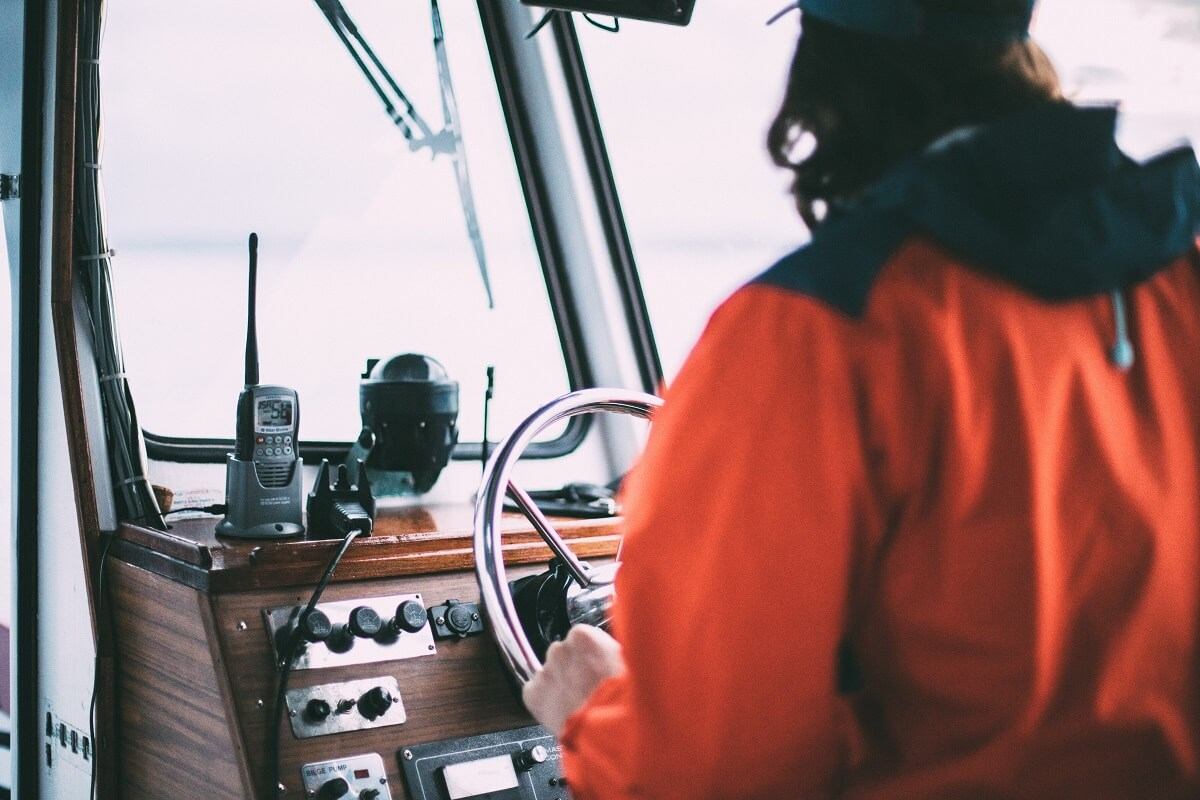How to Use Your VHF Radio Properly at Sea

The ‘VHF’ in ‘VHF radio’ stands for ‘Very High Frequency’. What should also be very high is the level of seriousness to attribute to your maritime vessel’s radio. This article will explain the best way to approach using your VHF radio as a way of guaranteeing your safety when you’re out at sea.
What is VHF radio and how does it work?
Simply put, VHF radios are a way of contacting radio bases and nearby vessels whenever you need to communicate with them. You could use your radio for a few uses such as to inform a port that you are approaching, or to let the appropriate channel know that you are in distress.
VHF radios have not become obsolete as mobile technology advanced. Apart from the fact that you can’t contact nearby vessels with your mobile, the reality is that mobile network coverage is not available as you venture farther out at sea. That’s where the high frequency of your radio comes in handy, as your typical on-board VHF will have a range of about 10 miles, whilst a handheld VHF has a range of 2-4 miles, which is considerably less.
VHF radio units can literally save your life. That’s why anyone manning a marine vessel needs to know how and when to use their radio unit. This article will tell you how to do exactly that.
Maritime VHF Etiquette
Using your VHF radio at sea isn’t just about knowing what buttons to press – it also has a lot to do with knowing how to not press people’s buttons.
Wherever you may be sailing, it’s essential that you know which VHF radio channels are available to contact when you need to. Most essential of all is knowing that the channel to contact for Distress and Safety Messages is Ch 16 (which is the same number used internationally).
Indeed, ‘When you need to’ is the order of the day here. Misusing the distress signal can definitely get you into some real trouble (when you’re in danger, of course, don’t think twice about contacting the channel!). However, make sure to not abuse your VHF radio even when contacting neighbouring vessels – it’s unlikely that any of them are looking for chitchat with strangers.
In other words, let this be your general ethos towards maritime VHF Etiquette – treat your radio unit as a handy communication tool to use if you need to, but avoid using it if you can.
In fact, it’s your responsible to take preventative measures. Don’t use your vessel in risky weather; make sure that your vessel is in complete working order and that you have all the necessary supplies. Also perform radio checks before you set out, to ensure that the radio is in working order.
If you do end up having to use your radio, make sure to speak calmly, for complete intelligibility. Also make sure to hold your speaking device at a 90-degree angle, put your thumb on your cheek and speak across the microphone to avoid distortion (you’re making a call; you’re not playing in a rock band).
Distress signals on VHF
You need to drill the required procedure in your head before you make a distress signal. On some level, this ties back in with the sense of etiquette we just talked about – if you don’t follow procedure, you might give the impression of taking the mickey and you won’t get the help you need.
However, a lot of it is about practicality. Speaking calmly and repeating your information helps you be more understandable and will mean that assistance will be on the way quicker.
Also known as hailing, you start a distress call by repeating ‘Mayday’ three times (or ‘Pan Pan’ for situations that are not life-threatening), and then the name of your boat three times. Once you receive a response you will asked to provide all the necessary details, including your location, description of your vessel, number of persons on board, and nature of your situation. If you don’t get an initial response, try again after a couple of minutes.
Once you’ve been assured that assistance is coming your way, leave your radio on for any possible further updates. This is crucial.
Radio safety guidelines at sea
In addition to everything we’ve stated above, there are also some really specific details regarding radio safety that are so subtle you might not even have considered their importance at all.
For starters, you need to learn how to take care of your VHF radio unit. If the components of your radio corrode, you might find yourself in some serious trouble. The key element here is to make sure that saltwater does not come in contact with your VHF radio, as this could damage it easily.
Furthermore, ass we’ve already said, clarity is key when contacting a radio channel – so we highly recommend trying tips such as giving your boat a simple name. Cleverness might seem cool, but it won’t be so cool when the guy on the other end can’t help you because he doesn’t understand what your boat is called.
Recap
The biggest takeaway here should be that VHF aren’t toys. They’re life-saving tools, and should be treated as such. Learn how to care for your radio so that will last until you really need it. Just as importantly, learn your radio etiquette and communication procedures so that people on the other end will be able to help if you ever need them to!
